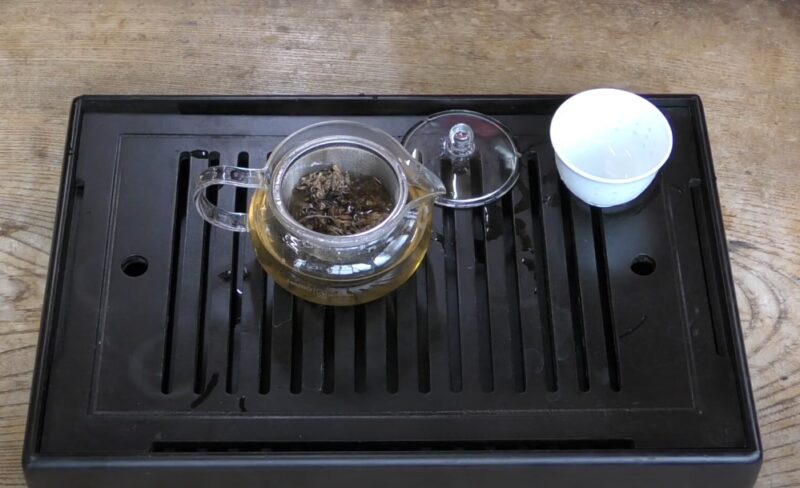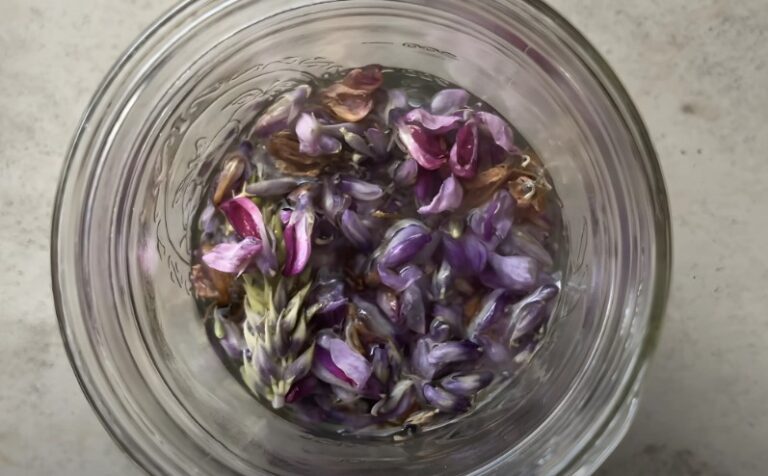For many, the sight of kudzu draped over trees, telephone poles, and everything in between brings up feelings of annoyance. Kudzu (Pueraria montana), originally introduced to the U.S. from Japan and China, was intended to be a helpful forage crop for cattle back in the 1930s.
Fast-forward to today, and kudzu has become notorious for its rapid growth—stretching up to a foot per day—and its ability to smother landscapes. Yet, while it may be a villain in the garden, kudzu can also be a hero in the kitchen.
Turns out, most of the plant is edible, and it’s actually delicious. Let’s explore some tasty ways to fight back against the “vine that ate the South” by eating it before it eats your yard.
What Parts of Kudzu Can You Eat?

Kudzu is more versatile than it looks, with many parts being edible:
- Leaves: The youngest, most tender leaves are great for cooking. Larger leaves tend to be too tough.
- Flowers: Kudzu flowers, with their lovely purple hue and grape-like fragrance, can be used to make jellies or teas.
- Stems: Young shoots can be cooked and eaten, much like asparagus.
- Roots: Kudzu root starch is a common ingredient in some Asian cuisines and has even been used medicinally.
There’s something wonderfully satisfying about turning an invasive plant into something tasty and useful. So let’s get into a couple of recipes that showcase just how yummy kudzu can be.
Kudzu Blossom Jelly Recipe
Kudzu’s delicate purple flowers smell just like grapes, and that fragrance translates beautifully into a unique jelly.
Imagine this jelly spooned over cream cheese, melting onto a stack of warm waffles, or drizzled over ice cream—it’s divine!
Ingredients
- 4 cups kudzu blossoms
- 4 cups boiling water
- 1 Tbsp lemon juice
- 1 ¾ oz package of powdered fruit pectin
- 5 cups sugar
Instructions
- Prepare the Kudzu Blossoms: Begin by washing the kudzu blossoms with cold water. Drain well and place in a large bowl.
- Infuse Blossoms: Pour the boiling water over the blossoms, cover, and refrigerate overnight (or at least 8 hours). You’ll notice that the liquid initially turns a gray color—don’t worry, that’s completely normal!
- Strain and Cook: After soaking, strain the liquid through a colander into a Dutch oven, discarding the blossoms. Add lemon juice and pectin, then bring the mixture to a rolling boil over high heat, stirring constantly.
- Add Sugar: Stir in sugar and return to a full boil. Keep stirring for about one minute.
- Can the Jelly: Remove from heat, skim away any foam, and quickly pour the jelly into hot, sterilized jars. Fill each jar to about ¼ inch from the top. Wipe the rims, place on the lids, and process in a boiling water bath for 5 minutes. Let the jars cool on wire racks.
You now have a beautifully fragrant kudzu jelly, perfect for breakfast or as a delightful homemade gift.
Stuffed Kudzu Leaves Recipe

One of the most underrated parts of kudzu has to be its leaves. They’re fresh, tender, and have a mild flavor reminiscent of green beans.
When stuffed, they make for a hearty and comforting dish that’s perfect for a family meal, like Japanese knotweed.
Ingredients
For the Leaves
- 30 young kudzu leaves (small and tender)
- 2 tsp salt (for blanching)
For the Stuffing
- 1 cup rice, rinsed
- 1 lb ground lamb or lean ground beef
- 1 cup canned diced tomatoes
- ½ tsp allspice
- Salt and pepper to taste
For Cooking
- 1 (15 oz) can diced tomatoes
- 3 cloves garlic, cut in half
- Juice of 3 lemons
- Soup bones (optional)
Instructions
- Prepare the Leaves: Gather medium-sized young kudzu leaves. Wash them thoroughly. Blanch in salted boiling water for 2-3 minutes, separating them as they soften. Drain the leaves and let them cool.
- Remove Stems: Use a knife to remove the heavy center stems from each leaf by cutting down each side of the stem, but only about halfway down the leaf.
- Mix Stuffing: In a bowl, combine the rinsed rice, ground meat, diced tomatoes, allspice, salt, and pepper. Mix well until all the ingredients are evenly combined.
- Stuff the Leaves: Take a blanched kudzu leaf and close the cut center stem. Place about a teaspoon of the stuffing mixture in the center and roll the leaf into a cigar shape, folding the edges in as you roll.
- Layer and Cook: Line the bottom of a large pan with something to prevent the stuffed leaves from touching the bottom directly—a round rack or soup bones work well. Arrange the rolled leaves in layers, alternating directions as you stack them.
- Add Liquid: Pour in the canned diced tomatoes, salt, garlic halves, and lemon juice. Press down with an inverted dish to keep everything in place, and add water until it reaches the top of the dish. Simmer over low heat for about 40-50 minutes or until the rice and meat are fully cooked.
Serve warm, and enjoy the earthy, delicate flavor of the stuffed leaves. It’s like eating a piece of the landscape, but in a good way.
Other Fun Ways to Use Kudzu in the Kitchen

Kudzu’s versatility in cooking makes it a fun ingredient to experiment with beyond just jelly and stuffed leaves. Here are a few additional ideas to consider:
Kudzu Tea
Kudzu leaves or blossoms can be steeped in hot water to make a simple herbal tea. The flowers, in particular, give the tea a lightly sweet and floral aroma. It’s a nice way to unwind after a long day.
Kudzu Tempura
Young leaves and tender shoots of kudzu can be dipped in a light batter and fried until crispy. Tempura-style kudzu is an excellent way to introduce someone to the plant’s taste if they’re skeptical.
Kudzu Root Starch
If you happen to get your hands on kudzu root starch, it can be used as a thickener for soups, stews, and sauces—a bit like cornstarch but with a silkier texture.

